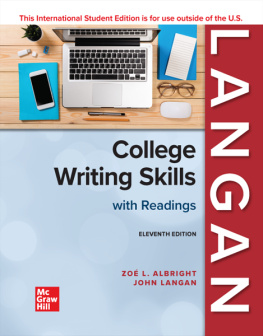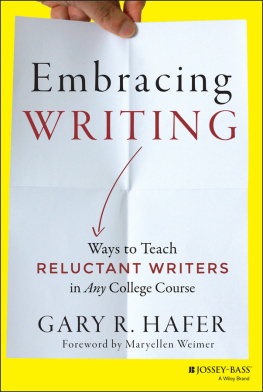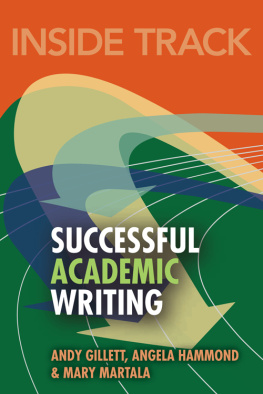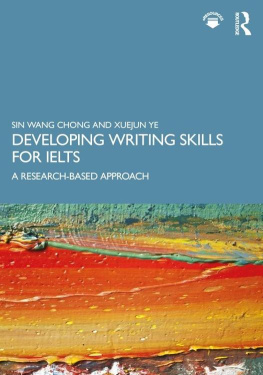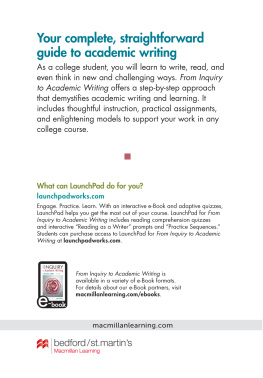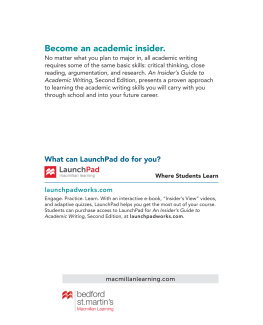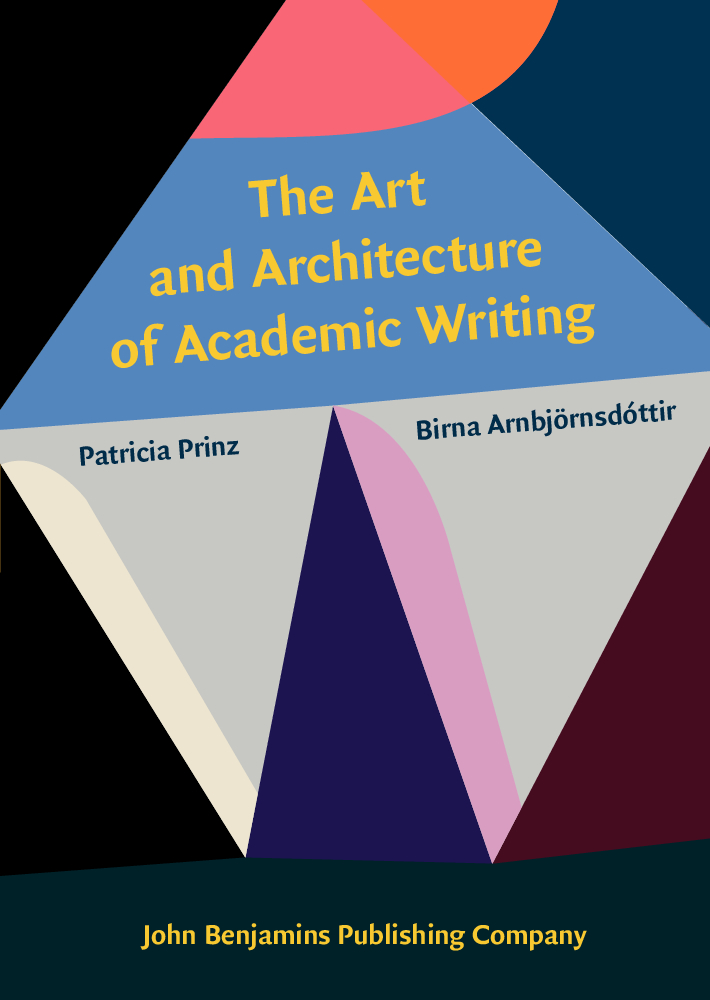Lart dcrire est lart de dcouvrir ce en quoi vous croyez.
The art of writing is the art of discovering what you believe. Gustave Flaubert
The goal of this book is to help students become independent, autonomous writers with the confidence to express their ideas and beliefs clearly through the written word. Academic writing in English is challenging for native and non-native speakers alike. The Art and Architecture of Academic Writing has been created to address the specialized challenges of students whose first language is not English.
The book builds on the premise that becoming a writer is not unlike becoming an artist. In the same way that great artists must master the building blocks of line, color, shape, form, space, and texture before going on to create original styles of expression, writers need to master certain basic building blocks which serve as a foundation for communicating with creativity and authenticity in academic contexts. Like artists who follow processes for planning, gathering materials, creating, and refining a work of art, writers need a process that guides planning, research, crafting and revising a manuscript.
The authors recognize that academic writing requirements vary widely across disciplines. However, some fundamental elements of academic writing apply to all disciplines. This book will help students master core building blocks of academic writing which are used across most disciplines and will introduce the AWARE framework (Arranging to write, Writing, Assessing, Revising and Editing) that will guide students through the stages of academic writing from planning to the final draft. The book develops academic writing competencies from three perspectives:
The architecture of academic writing focuses on the building blocks of academic writing the required elements that create a strong foundation to support the writers ideas. The architectural elements include a thesis statement, rhetorical patterns for organizing information, academic language, and appropriate stylistic conventions. All academic writers adhere closely to these architectural elements.
The art of academic writing develops the aspects of writing that reflect the writers unique style and message. Each writer makes choices with respect to vocabulary, sentence structure, grammar, topics, and focus. Together these combine to create a unique voice that distinguishes one writer from others. The writers voice is as important as the architecture of writing. A sound structure is a necessary framework for presenting information, but it must never overshadow the writers unique perspective on a topic.
AWARE teaches a specialized framework that guides writers through the academic writing cycle from the beginning of an assignment to the final product. It provides step-by-step instruction for five stages of the academic writing cycle. AWARE demonstrates and practices a repertoire of strategies that students can use for each stage of writing. The process and strategies develop competent, independent writers who will be able to draw on AWARE as a foundation for writing throughout their academic careers.
The content of this book is presented in two parts. Part I develops the writers voice by helping students analyze and communicate their thoughts about a topic effectively. To keep the focus on developing the writers voice, the exercises and assignments in Part I do not require research. Part II focuses on writing that synthesizes and presents research from multiple sources.
This chapter will lay the groundwork for the rest of the book. In this chapter, students will:
distinguish between private and public writing,
recognize different writing genres,
differentiate formal and informal language,
identify the characteristics of academic language,
expand their use of academic vocabulary,
examine the role of voice in writing.
A. The social context of writing
All human communication and interaction are guided by social values and rules. Although writing is considered a solitary activity, it is essentially a social act initiated for the purpose of conveying a message to an audience. All writing is, therefore, guided by norms based on social purpose and the expectations of a community.
The term discourse is often used to refer to a set of language norms shared by a particular community in their communication. These norms include underlying rules for sentence structure, vocabulary, level of formality, and patterns for organizing sentences in extended speech or writing. All discourses evolve within a social context in order to serve specialized communication needs.
Most adults have learned to recognize different types of discourse in their own language. Readers are able to distinguish between a magazine article and a novel and have expectations for the type of language and content each will present. In fact, most people are proficient in multiple discourses; nevertheless, a majority of people find they are challenged to understand certain specialized discourses in their native language.
Effective writers identify their audience and follow the language norms of the corresponding discourse community. Understanding the discourse of academic writing is as important as proficiency in grammar and vocabulary. Although knowing grammar and vocabulary is necessary for writing in a second language, it is not sufficient. Second language writers must also follow the writing norms of the academic community and recognize how these norms differ from academic writing norms in their first language.
Reflection: The discourse of the medical community, the legal profession, or even a sports club can be relatively difficult for the native speakers who are not involved in those communities. Can you give an example of a discourse that is challenging for you in your own language?
Public and private writing
One way to examine writing is to situate it on a continuum that ranges from private to public communication. Private messages are usually intended for a designated audience that is known to the writer, often friends or family members. Examples of private writing include mobile text messages, diaries, private letters, and emails. In private written communication, the content as well as the context are familiar to both the writer and the reader. This shared knowledge makes private writing relatively easy for the reader to understand.
Public writing differs markedly in content and context from private writing. The writer may not know his audience personally and the audience often does not know the writers intentions. Public communication may be intended for a small group of people or an audience of millions. In public writing, knowledge of the topic and context is not necessarily shared by writer and reader. Nor is the writer present or available to explain the written communication to the reader. Therefore, in public writing, the author must establish a shared context to communicate effectively with unknown readers.



